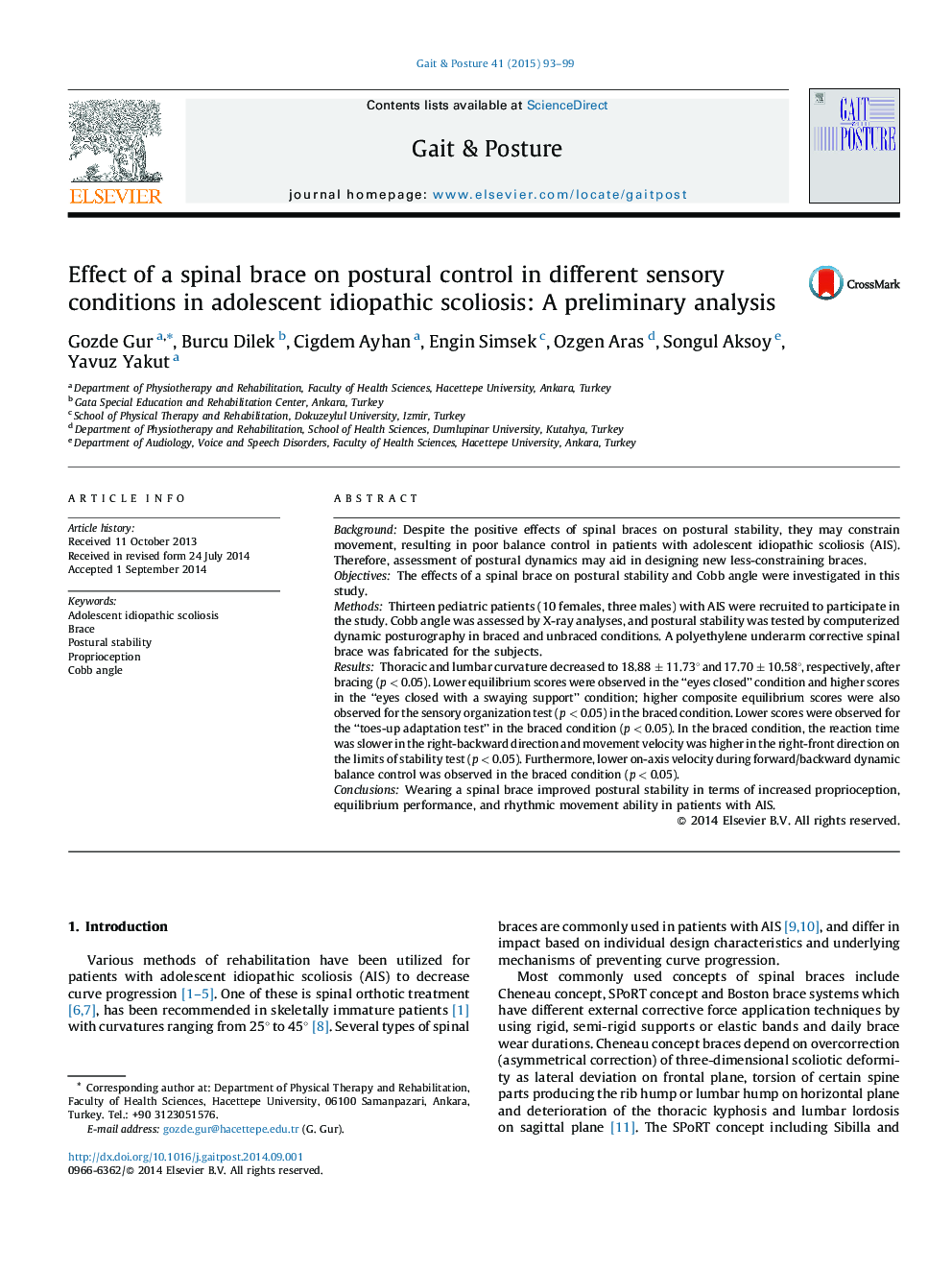| Article ID | Journal | Published Year | Pages | File Type |
|---|---|---|---|---|
| 6205661 | Gait & Posture | 2015 | 7 Pages |
â¢Our spinal brace reduced Cobb angles in patients with AÄ°S.â¢Ä°mprovements in proprioception, equilibrium and rhythmic movement ability were obtained in subjects while wearing our brace.â¢The design characteristics of the brace may have provided additional benefits and enhanced balance control in the AIS.
BackgroundDespite the positive effects of spinal braces on postural stability, they may constrain movement, resulting in poor balance control in patients with adolescent idiopathic scoliosis (AIS). Therefore, assessment of postural dynamics may aid in designing new less-constraining braces.ObjectivesThe effects of a spinal brace on postural stability and Cobb angle were investigated in this study.MethodsThirteen pediatric patients (10 females, three males) with AIS were recruited to participate in the study. Cobb angle was assessed by X-ray analyses, and postural stability was tested by computerized dynamic posturography in braced and unbraced conditions. A polyethylene underarm corrective spinal brace was fabricated for the subjects.ResultsThoracic and lumbar curvature decreased to 18.88 ± 11.73° and 17.70 ± 10.58°, respectively, after bracing (p < 0.05). Lower equilibrium scores were observed in the “eyes closed” condition and higher scores in the “eyes closed with a swaying support” condition; higher composite equilibrium scores were also observed for the sensory organization test (p < 0.05) in the braced condition. Lower scores were observed for the “toes-up adaptation test” in the braced condition (p < 0.05). In the braced condition, the reaction time was slower in the right-backward direction and movement velocity was higher in the right-front direction on the limits of stability test (p < 0.05). Furthermore, lower on-axis velocity during forward/backward dynamic balance control was observed in the braced condition (p < 0.05).ConclusionsWearing a spinal brace improved postural stability in terms of increased proprioception, equilibrium performance, and rhythmic movement ability in patients with AIS.
